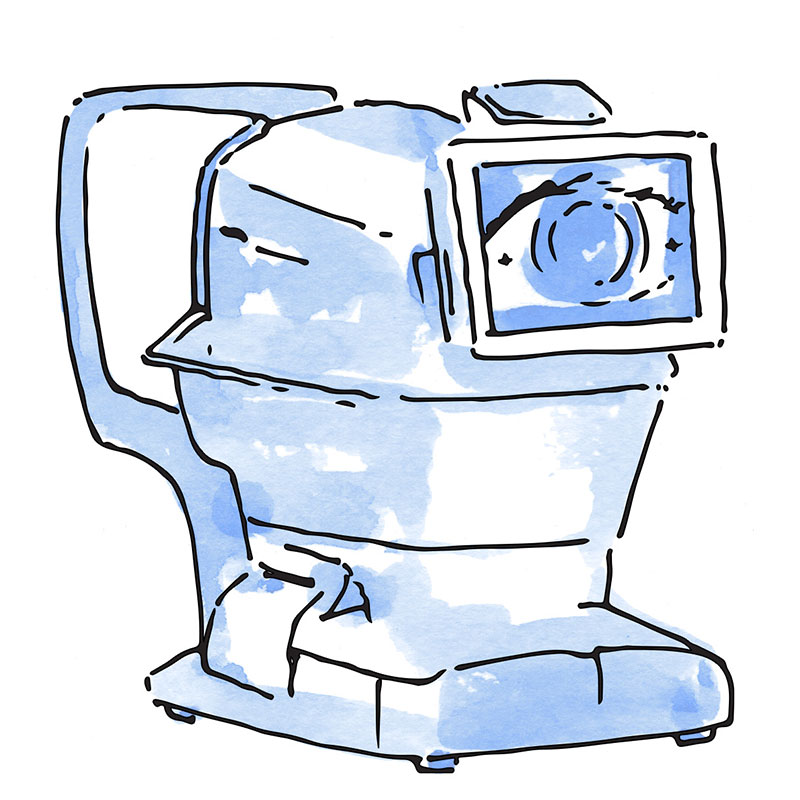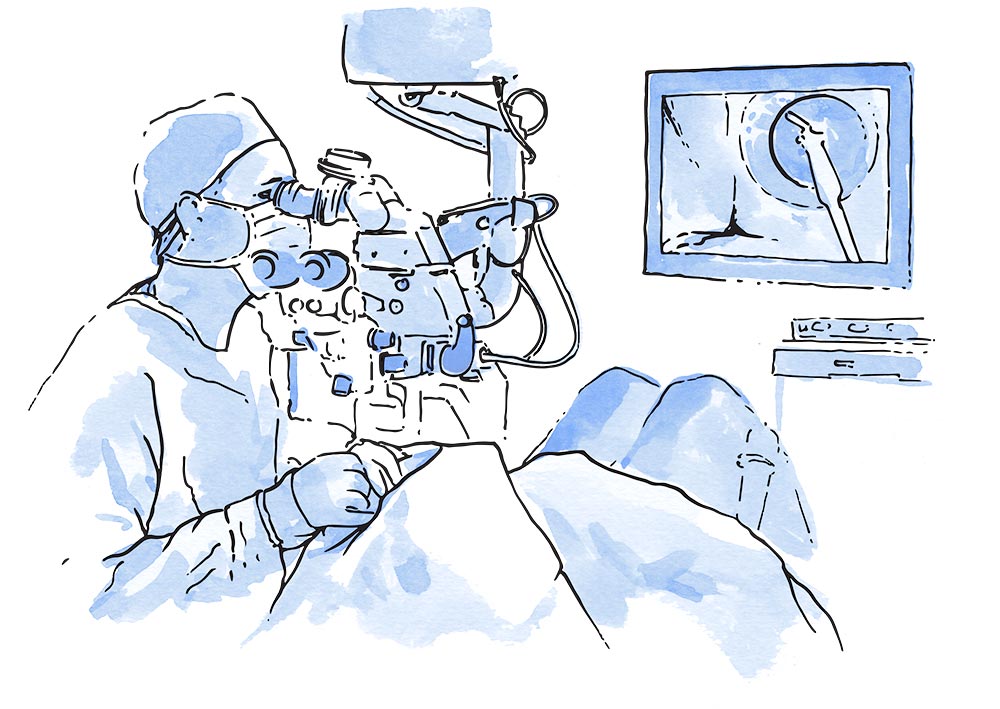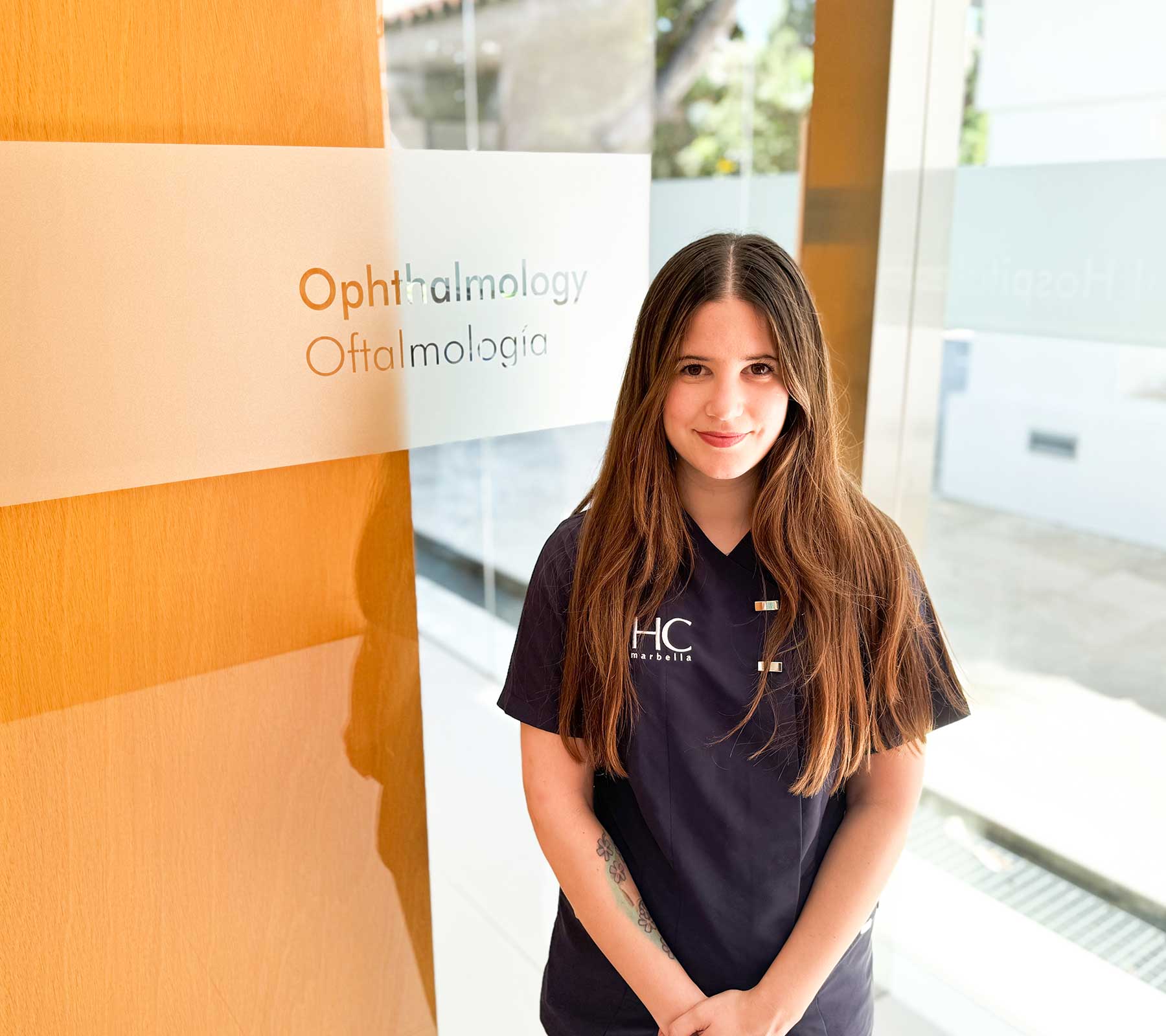Dr. Gismero Moreno, Saturnino
Jefe de servicio
Oftalmólogo especialista en Retina

Das Glaukom ist eine chronische Augenerkrankung, welche den Augennerv betrifft und zu einem graduellen oder irreversiblen Verlust des peripheren Sehens führen kann.
Wenn es nicht korrekt behandelt wird, kann es zu Blindheit führen. In der Regel ist das Glaukom mit einer Erhöhung des Augeninnendrucks assoziiert.
Augentropfen können in vielen Fällen die Behandlung der Wahl sein, in einigen Fällen jedoch ist ein chirurgischer Eingriff die effektivste Lösung, um den Augeninnendruck zu senken.
In dem Augenzentrum von HC setzen wir auf professionelle Experten und fortschrittliche Lösungen für die Behandlung des Glaukoms:

Das Glaukom ist eine unbemerkt verlaufende Erkrankung, die im Anfangsstadium komplett asymptomatisch verlaufen kann. Der wichtigste Risikofaktor ist normalerweise ein erhöhter Augeninnendruck, der mit der Zeit einen fortschreitenden Verlust des peripheren Sehens nach sich zieht und schließlich zur Erblindung führt. Die Früherkennung ist der Schlüssel zur Behandlung des Glaukoms. Die Erfahrung unserer Fachleute und die fortschrittliche Technologie, über die wir verfügen, ermöglichen es uns sogar, eine Diagnose zu stellen, bevor das Sehvermögen beeinträchtigt ist.

Die wichtigsten Risikofaktoren sind:

Da es sich um eine Erkrankung handelt, die bis zu einem fortgeschrittenen Stadium symptomfrei verlaufen kann, ist es sehr wichtig, regelmäßige Augenuntersuchungen durchzuführen, vor allem ab dem 40. Lebensjahr.
Unser Team von Ophtalmologen nimmt umfangreiche Untersuchungen an Ihren Augen vor. Wir führen folgende Untersuchungstechniken durch:

Nach einer umfangreichen und individualisierten Untersuchung jedes Patienten bestimmt unser Team den optimalen Augeninnendruck und legt die dafür indizierte Behandlung fest, um diesen zu erreichen. Dadurch wird eine Beschädigung des Sehnervs vermieden und das Fortschreiten der Erkrankung gestoppt.
Pharmakologische Therapie
In den meisten der Fälle sind hipotensorische Medikamente in Form von Augentropfen die Mittel der Wahl. Durch diese wird eine Reduzierung des Augeninnendrucks herbeigeführt. Die Betreuung ist hierbei sehr wichtig, um den Behandlungserfolg zu überprüfen, die Einhaltung der Behandlung sicherzustellen, die Entwicklung zu überwachen und mögliche Nebenwirkungen zu kontrollieren.
Chirurgische Therapie
Wenn eine medikamentöse Behandlung nicht ausreichend und somit ein chirurgischer Eingriff indiziert ist, legen unsere Augenärzte fest, welche der fortschrittlichen chirurgischen Techniken am geeignetsten ist, um das bestmögliche Resultat zu erzielen.
Minimal-invasive Chirurgie des Glaukoms (MIGS): Xen Implant, iStent Implant
Die MIGS-Techniken sind eine sichere und effektive chirurgische Möglichkeit der Behandlung. Sie haben wenige Nebenwirkungen und sind minimal-invasiv, was die postoperativen Beschwerden reduziert und die Heilung beschleunigt.
Sie ermöglichen es, das Fortschreiten des Glaukoms zu kontrollieren, und tragen so dazu bei, den Einfluss der Erkrankung auf die Sehfähigkeit des Patienten und seine Lebensqualität zu minimieren.
Die MIGS-Verfahren erreichen es, den Augeninnendruck mit dem Einsetzen eines mikrodispositiven Implantats zur Drainage (Xen Implant, iStent Implant) zu kontrollieren, die den Abfluss des Kammerwassers erleichtern.
Nicht-perforierende tiefe Sklerektomie (EPNP)
Das Ziel der nicht-perforierenden tiefen Sklerektomie (EPNP) ist es, eine kontrollierte Drainage für das Kammerwasser zu ermöglichen. Es handelt sich um ein mikrochirurgisches, sehr präzises Verfahren, welches es ermöglicht, einen Teil des Trabekels durch einen Gang der Sklera (dem weichen Teil der Augenwand) zu entnehmen. Das Trabekelwerk ist die Struktur, durch die normalerweise das Kammerwasser abgeleitet wird. Mit diesem Verfahren verändern sich die intraokularen Strukturen nicht. Aus diesem Grund wird das Verfahren als nicht-penetrierend bezeichnet. Dieses führt dazu, dass das Verfahren trotz seines chirurgisch hohen Anspruchs als eine sicherere und komplikationslosere Operations-Technik gilt als die klassische Trabekulektomie.
Express Implantat
Es handelt sich um ein schnelles, sicheres Verfahren, mit einer kürzeren und angenehmeren Nachsorge. Es besteht aus dem Einsetzen eines mikroskopischen Implantats, welches die Kommunikation der vorderen Augenkammer mit dem Bereich unter der Bindehaut (subkonjunktival) ermöglicht und so den Abfluss des Kammerwassers erleichtert.
Während der Nachsorge kommt es nicht selten dazu, dass spezielle Techniken zur Reduzierung oder Vermeidung einer exzessiven Vernarbung angewendet werden. Diese Narben könnten dazu führen, den Kammerwasserabfluss zu behindern.
Abhängig von jedem einzelnen Fall können Laser oder subkonjunktivale Manipulationen direkt in der Sprechstunde oder im Operationssaal (Needling) angewendet werden.
Mit demselben Ergebnis können bestimmte Medikamente intraoperativ oder während der Nachsorge normalerweise lokal im subkonjunktivalen Bereich angewendet werden, sei es in der Sprechstunde oder in einem chirurgischen Setting. Ihr Spezialist wird Ihnen die Erklärungen und die Details für die beste Option in Ihrem persönlichen Fall geben.

Dr. Gismero Moreno, Saturnino
Jefe de servicio
Oftalmólogo especialista en Retina
Dr. Alberte González, Antonio
Oftalmólogo
Especialista en Glaucoma
Dr. Flores Márquez, Ana
Oftalmóloga especialista en retina médica
Dr. Álvarez López, Alejandro
Cirugía oculoplástica y orbitaria
Partal, Carlos
Óptico y optometrista clínico
Tel.: +34 952 908 628
+34 609 148 799
952908898 Onkologie
951829978 Bildgebende Diagnostik
951829947 Gynäkologie
952908897 Fertilitäts-Zentrum
951829947 Physiotherapie